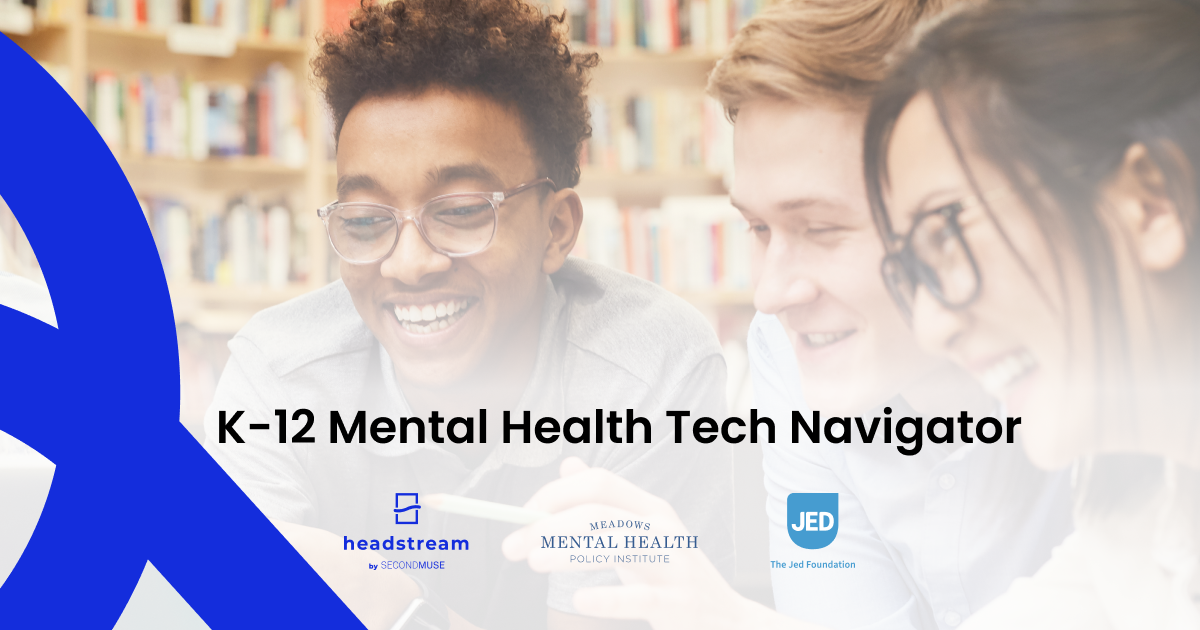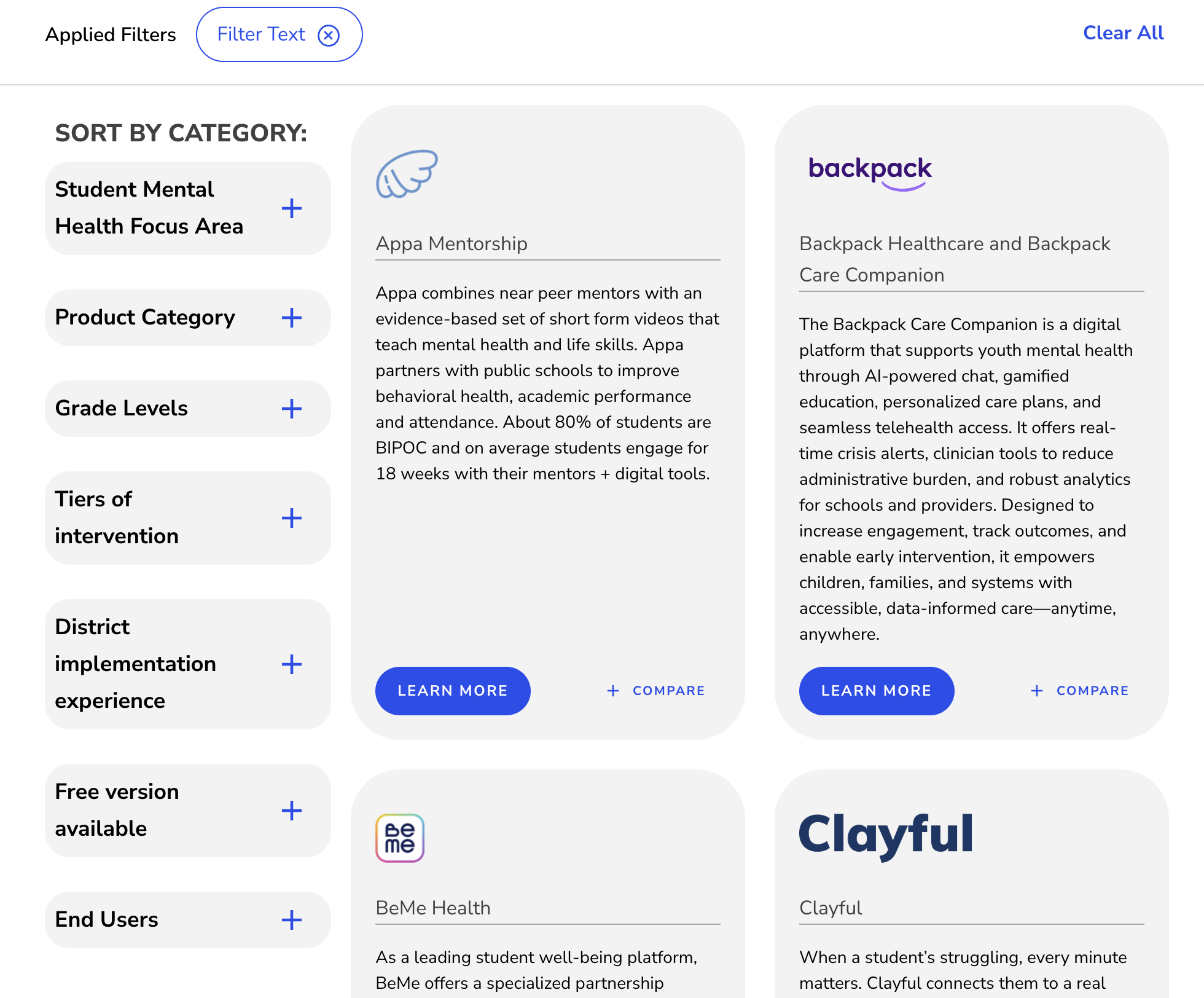Thank you! Check out these resources.

K-12 Mental Health Tech Navigator Landing Page
The K-12 Mental Health Tech Navigator is here to help schools and districts choose and use effective digital tools for student mental health and well-being. Wherever possible, we've included guidance on how to integrate these digital health products into a broader, more comprehensive approach to student mental health.

Assess Student Needs
Assessing a school district’s needs around mental health support for students involves a comprehensive and systematic approach, which is essential to ensuring that students are present, healthy, ready to learn, and prepared for success.

Develop Life and Character-Building Skills
Life and character-building skills include managing emotions, health, finances, relationships, and school performance. When young people lack these skills, they are at higher risk for substance misuse, mental health challenges, and self-harm.

Promote Social and School Connectedness
Schools can foster social connectedness, a key component of a positive climate. When students feel they belong, are safe, and supported, they engage in learning, build healthy relationships, and thrive.

Equip Staff and Students to Recognize and Respond to Distress
Supporting struggling students requires staff to quickly recognize and respond to distress signs and know available resources. Staff members should be trained to respond appropriately, connect students with resources, and understand protocols and school-based referral pathways for getting students the help they need.

Ensure Student Access to Effective Mental Health Treatment
Ensuring students have access to effective mental health treatment is vital for their well-being and academic success. This requires a robust care network with prevention, early intervention, and clear processes and targeted screening for identifying at-risk students.

Case Study: Rim of the World
Rim of the World Unified School District (ROWUSD) is a rural district serving several communities in a 125-square-mile area in the San Bernardino Mountains of California.

Case Study: Methuen Public Schools
Methuen Public Schools is located 30 miles north of Boston, an area that has been heavily affected by the opioid crisis.

Case Study: Uplift Education
Uplift Education (Uplift) is a Texas charter network of 45 schools stretching across the Dallas-Fort Worth area. Uplift is led by a superintendent, chief of schools, and regional directors who oversee multiple campuses.

Case Study: Judson Independent School District
Judson ISD is a public school district encompassing seven incorporated cities over more than 55 square miles that run north/south along the east side of San Antonio, Texas.

Case Study: Cherry Creek Public Schools
Cherry Creek Public Schools is the third largest school district in Colorado serving 53,000 students and more than 300,000 residents. It serves seven municipalities spanning 108 square miles from the heart of Denver out towards the eastern plains.
.webp)
Plan for Stakeholder Engagement
As you start using digital mental health tools, it is important to engage key community members at every stage. Students, caregivers, teachers, administrators, clinical staff, and technology departments each bring unique perspectives that are valuable throughout the procurement process.

Digital Well-Being Product Index
This page features a list of products as an illustration of how districts could gather and assess potential digital mental health solutions based on specific criteria. We’ve included this list not as an endorsement of these products, but to offer users a tangible example.

Disclaimer
The K-12 Mental Health Tech Navigator is being provided for educational and informational purposes only. It provides illustrative examples of technology products that are marketed by third-party vendors for purchase and implementation by schools to augment supports for mental health and well-being for its students.

Product Assessment
The K-12 Mental Health Tech Navigator is being provided for educational and informational purposes only. It provides illustrative examples of technology products that are marketed by third-party vendors for purchase and implementation by schools to augment supports for mental health and well-being for its students.

Funding
Funding school mental health programs can be challenging when school districts face budgetary constraints and competing priorities for limited funds.

Implementation
Digital well-being products can be an innovative way to supplement the existing programs and supports your district uses to address growing concerns about student well-being.

About Us
Headstream, an innovation program by SecondMuse, is committed to coordinating efforts around the increased utilization of digital mental well-being products in school systems and out of school programs.
